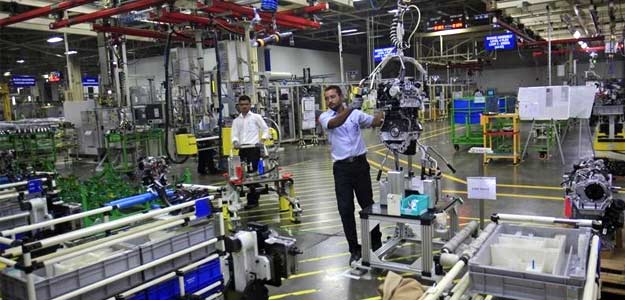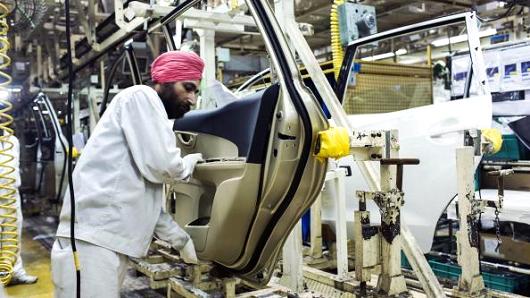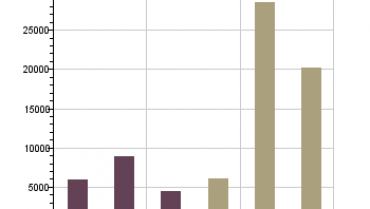As China looks to wean its economy off a heavy dependence on investment and exports, India is embarking on the very same growth model that could see the South Asian nation assuming the role of the world’s factory floor within the next decade.
Prime Minister Narendra Modi has articulated in recent speeches and through policy actions that Asia’s third largest economy is in need of a growth model which centers on export-oriented manufacturing, heavy infrastructure building and urbanization.
“This suggests a shift from India’s current services-driven growth trajectory to an East Asian growth model based on the mass deployment of labor and capital,” Sanjeev Sanyal, global strategist at Deustche Bank wrote in a report.
If India succeeds, it has the potential to become the factory of the world, Sanyal said in an interview with CNBC, a role assumed by China in the past decade.
“As China gets off the model, it creates space for a country like India, with cheaper labor, to become a manufacturing hub,” he said.
The East Asian growth model is a well-trodden path by countries from Japan to China to generate and sustain rapid economic expansion.The paradigm, however, has eluded India, which leaped from an agriculture-focused to a service-dominated economy, by passing a manufacturing-led growth phase.
Manufacturing accounts for 15 percent of India’s gross domestic product (GDP), while the services sector contributes about 60 percent.
“It’s all good to have the software industry and Bollywood, but it doesn’t generate enough jobs. You have this peculiar situation where 60 percent of the economy is generated by services, but it only employs 28 percent of the workforce. Agriculture, which is 14 percent of the economy, accounts for 50 percent of employment,” he said.

“This has led to the feeling that the services-led economic boom has disproportionately benefited the old ‘English-speaking’ middle class but not those aspiring to join the middle-class through hard work and education,” he added.
India is in urgent need of generating employment due to its expanding working age population. Between 2015 and 2020, the working age population will rise from 804 million to 856 million. This requires 10 million additional jobs per year till the next elections to keep up with demographic expansion.
Growth model challenges
To be sure, the transition to the East Asian growth model won’t be an easy one.
Mobilizing and deploying a large pool of capital will be a key aspect of the new growth model. This will require a rapid expansion of the financial and banking system.
Modi has put in place a target of opening 75 million new bank accounts by January 2015. While the primary purpose of this is to enable direct transfers of subsidy payments to the poor, it could play a big role in mobilizing savings in the long run, Sanyal said.
In addition to the vast amount of capital, the East Asian model requires a mass deployment of labor. This could prove to be challenging given the rigid labor laws and the fact that cities are not prepared to absorb the millions of industrial workers needed to feed the growth machine, Sanyal noted.
But should the model take off, the bank says it would prove to be a “major turning point in the lives of 1.2 billion people and would have very significant ramifications for the world economy.”
Not all agree that moving to an export-oriented manufacturing growth model is the right direction for India.
Jahangir Aziz, chief India economist at JP Morgan raises the question of whether India can really be a cheaper manufacturing base than China and other Asian neighbors such as Sri Lanka and Bangladesh.
“India has never been that cost effective because of labor laws,which make it difficult to hire and fire at will,” he said.On top of this, countries like China have far superior infrastructure in place that reduces the cost of transportation of goods from the manufacturing location to the port.
“India can invest in this infrastructure, but it will take time and the question is, would it be better to spend money in trying to improve the competitiveness of the services sector, seeing as services are the fastest growing part of people’s consumption basket,” he said.


